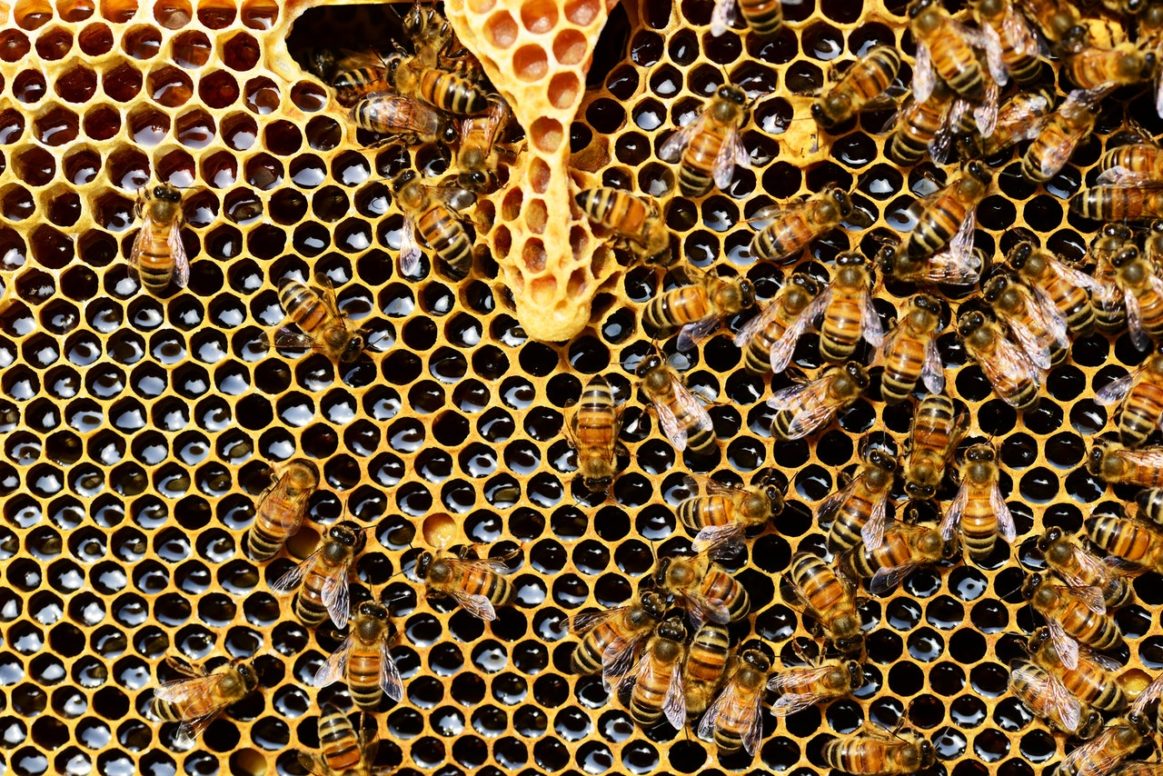Why Honey Bees Swarm ?
Swarm of honey bees is very capable of reducing the most fearless man to a quaking bowl of jelly with eyes exhibiting sheer terror. Yet they are normally of no danger to man in this swarming state. Watching honey bees pour forth from a bee hive by the thousands and then swirling in the air above like a tornado while sounding like a runaway express train is indeed one of natures most awesome scenes to witness. So, what is this swarming all about ? Are these thousands of bees preparing to attack one of us helpless humans at any minute ? Not at all. They are simply engaged in their own unique technique to propagate their species. All species of life has its own way to ensure that its kind continues to live. A normal honey bee hive will go through the winter with a population of approximately 12,000 bees. The Queen Bee will start laying eggs in January for the purpose of building up the population to a workforce of about 50,000 to 60,000 honey bees to maximize its ability during the height of the flowering season in Spring to gather nectar to bring back to the hive and turn into honey to be stored for the forthcoming winter as a food supply. Beekeepers actually rob the bee hive of its excess stores making sure they leave enough for the bees to store to live on through the oncoming winter season when there are no flowers in bloom from which the bees gather their nectar.
When a bee hive, be it in the wild or in a beekeepers bee hive, sees that it is running out of room to store honey, they know it is time for a large number to leave and seek to build a new hive to store an adequate supply of honey for the oncoming winter. Astute beekeepers who are properly managing their hives will anticipate this need for more storeroom space and add another box to the top of the hive “before the bees need it”. Not all beekeepers pay proper attention to their bee hives and hence some bee hives will run out of room and half the bees will leave with the original old Queen Bee in a swarm to seek a new home.
When the Worker Bees see that they are shortly going to be running out of storage room they start their preparations to swarm. First, they build larger then normal cells on the bottom of a frame inside a beehive [or the bottom of a comb in a wild colony]. These cells will look like small peanut shells. The workers will then induce the Queen Bee to lay eggs in these cells. The cells are then filled with royal jelly and when the egg transforms itself into a larvae it is sealed. The larvae feeds on the royal jelly. This excess food supply for the larvae plus the specific time spent sealed into the cell creates a new Queen Bee. It takes about 16 days for the egg in the cell to transform to a larvae and thence to a mature Queen Bee. On or about the 16th day the mature Queen Bee will begin to chew her way out of the top of the sealed cell. When she emerges she will immediately rush to each of the other Queen cells and thrust her stinger through the top of the wax cup to kill each of her rivals. There is only room for one Queen Bee in a bee hive ! After a day or two she will fly out of the hive and mate in the air with numerous male bees known as Drones. She will then return to the hive to live a life of laying up to as many as 1200 eggs a day during her laying season from Januarythrough about late October, dependent on the local climate. About three days before this Queen mentioned above first emerges as an adult from her Queen Cell a frenzy of activity is taking place inside the hive as the Worker Bees who will accompany their Queen Bee engorge themselves with honey to take with them as food supplies to carry them over until they can build a new hive elsewhere for themselves. While they are gathering food supplies some Scout Bees have already flown out of the hive to locate a good spot to build a new home.
This spot could well be an empty bee hive, a special box set out by a beekeeper to entice a swarm to settle in, a hollow in a tree or even inside the wall or ceiling of your home, should they find an opening to access the same. Meanwhile, at the first sign of an unknown signal one half of the bees inside the hive start flowing out of the hive in the thousands. At some point the original Queen Bee will have left and sought the refuge of a nearby bush or maybe high up in a tree or even on a car bumper in the city. The thousands of bees swarming out the doorway of their old hive rise in the air and swirl about somewhat like a tornado funnel making the noise of a railroad train. As the bees are swirling seemingly madly about they are in effect sniffing the air to detect a pheromone given off by the Queen. This pheromone is akin to the light in a Lighthouse as it directs the swarming cloud of bees to where the Queen bee has alighted. The cloud of swirling bees slowly diminishes as the bees gather around the Queen and form the ball which is what most people see when they spot a swarm in one place.
Meanwhile, if you will recall Scout Bees are out flying around looking for a suitable location to build a new bee hive. Once they have located a spot they fly back to the swarm and do a specific series of wiggling about, referred to as a “bee dance”. By means of this activity they are telling their work mates about this new place they found and providing directions on which way to fly to find it. Nobody knows how they decide which Scout Bee report is providing them with the best place to build a new bee hive, but somehow a decision is made and the entire swarm with the Queen in it flies off to this new location. Most swarms will fly off within fifteen minutes to an hour or so. On rarer occasions they may stay in place overnight. But be assured they will not bother you. Leave them be and they will leave. Should the Queen Bee falter due to an injury or is somehow killed the bees will stop where the Queen falls or is otherwise located and remain there until the Queen is able to resume flight or if she is dead they will not leave and will subsequently die. Without a viable live Queen Bee in their midst they are not capable of creating and sustaining a new bee hive. Once they arrive at their new hive site they immediately set to building new comb. The Queen must wait patiently until new cells are created for her to lay her eggs in to start building up a new work
force as soon as possible and get on with the business at hand. Pictured here are Queen Bee swarm cells inside a beehive. The bees are raising a Queen specifically to take over the hive when the swarm leaves the hive. Half of the bees leave with her.
force as soon as possible and get on with the business at hand. Pictured here are Queen Bee swarm cells inside a beehive. The bees are raising a Queen specifically to take over the hive when the swarm leaves the hive. Half of the bees leave with her.
The first virgin Queen that emerges from one of these cells will immediately sting all her unemerged rivals to death. Then she will leave the hive for her maiden mating flight.


